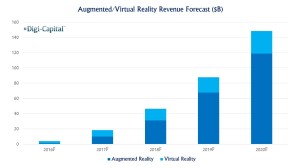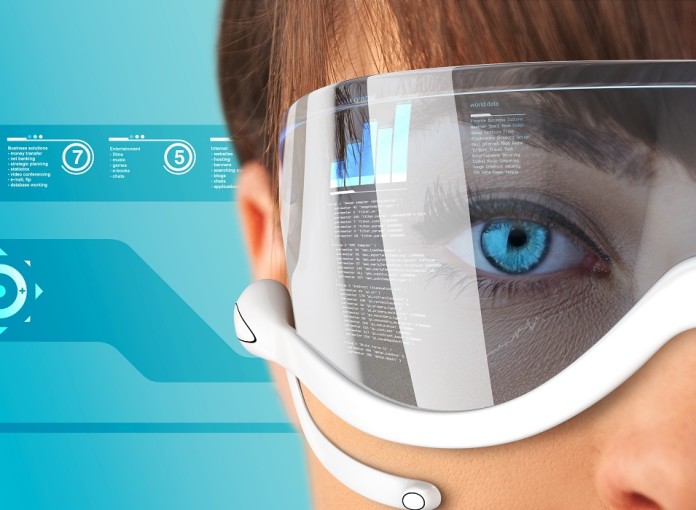Tech Report
The recent phenomenal success of Pokemon Go points the way to an explosion in funding for Augmented Reality (AR) tech. By 2020, it is estimated that AR will be worth upward of $120 billion, in comparison to the Virtual Reality market, which is predicted to be worth $30 billion, according to DigiCapital. No prizes for guessing where investors are looking to put their money. But why such interest in this emerging field, especially considering we’d been getting all sorts of VR hype the last few years?
AR Envisioned

Augmented Reality is still a relatively new technology. The term itself was first coined in 1990 by Thomas Caudell, a researcher at Boeing, to describe the head-mounted displays used by electricians wiring complex assemblies.
AR technology integrates digital information with the user’s environment in real time – a marked difference in user experience to the full immersion afforded by Virtual Reality applications. The latter often require a bulky headset or visor in order to work, and seek to embed the user fully into their 3D world. There’s really no interaction with the outside world but an immersion in a virtual one.
James Hogan, at AR engine start-up Kudan, defines Augmented Reality as “a graphic overlay – be it 3D graphics or flat 2D visuals – over a real-time view of the physical environment”. AR apps enable developers to tether digital animation and contextual data to an augmented reality “marker” in the real world, so when a computing device’s browser plug-in or bespoke app picks up data from a known marker, this digital information can be mapped onto the real world environment accordingly. Very often, AR systems use GPS to fix and track location coordinates. GPS comes as standard in most modern phones, so AR apps for smartphones and tablets can be developed to take advantage of this in-built ability.
Imagine a handheld medical scanner which consists of an app loaded to a tablet, using the video-camera function to overlay health data – as viewed from the tablet, a real-time pulsing map of the human physiology might be projected onto a patient, from arteries right down to the course of individual blood vessels.
This is Star Trek territory, or it soon could be.
AR, the Story So Far
Early AR experiments tended to be expensive and specialised, employed for training purposes in in heavy industries such as gas and oil. One of the first broader uses of this technology was the overlaid “first-down” line, digitally added to televised American football games from 1998. Not eye-level AR, but a clear indication of its most basic functionality. Commercial interest didn’t really pick up until Google trialed Google Glass in 2013-14.
At around the same time, AR made the sideways leap to smartphones, enabling the geo-targeting of adverts. Other avenues were now open, and innovators rushed in. The field is fast-changing, with new applications appearing at a remarkable rate – This year sees the release of a wide field of apps ranging from an AR sandbox educational toy, to a cosmetic AR app for applying eyelashes.
Some apps began exploring the gaming and entertainment potential of this new technology. One notable example is the 2012 Android app entitled Ingress, a social location-based app game by Google spin-off Niantic, which supplied the model and indeed much of the code and location data for what was to become Pokemon Go.
When Niantic’s second game, Pokemon Go, hit general release in July 2016, it prompted Nintendo’s share price to surge by 36%, adding some £6 billion overnight to the company behind the Pokemon franchise. Within the first week, the app had been downloaded more times than Tinder.
The figures speak of a large consumer appetite for AR gaming, but the next field where AR impacts is likely to be in the wider world of sports.
AR set to Enhance Spectator Sports

Spectator sports such as golf and baseball generally come bundled with their own terminologies, and dense statistical data to unpack. AR might be the perfect medium to interpret these data sets in real time, as the game unfolds. A spectator wearing AR glasses, or viewing the action through their smartphone with a special AR app, would be able to tap into the richness of this data stream and interpret the flow of the game in a comprehensive manner.
To see how this might work in practice, let us consider the world of competitive poker, which has already benefited greatly from the smartphone revolution. Worldwide, over 100 million enthusiasts play the game live and follow poker tournaments such as the European Poker Tour (EPT), mostly through online streams. High profile games are live streamed on poker sites, dedicated Twitch channels and YouTube.
With interactive data tags overlaid upon the table action, the relative worth of a player’s poker hand is information that could be made readily available to the audience, whether they be watching the match in person, or streaming the action from their computer or phone. The audience is not as likely to know each combination of poker hands by heart, so it makes sense for them to have access to information such as whether a flush is ranked higher than a straight.
Similarly, the cumulative sum of the total pot could be tracked, alongside the individual winnings of each player, and the odds of community cards could be calculated in regard to their impact on each hand, with all of this information busily updating in real time as the game progresses. The same density of information available to a TV audience could be equally accessible to any spectator, wherever and however they choose to view the game – and yes, certainly in real life.
Near Realities & Possible Futures
Right now, there are quite possibly hundreds, maybe thousands, of app developers writing new code for AR applications. Racing to get onto the market. Smartphones and tablets have boosted AR development beyond VR, and look set to boost it further. And Pokemon Go’s success has caught the attention of the public, who will be looking for more applications of this exciting new technology.

The feat of overlaying digital information onto the moving template of the real world is a considerable technical achievement, but business models are still in the process of evolving, and usage patterns have yet to be fully analysed. It will be some time before this technology beds in fully.
There’s certainly potential here for marketing industry applications (think streets with virtual ads when viewed through a smartphone), and also intriguing implications for tourism. Travel site TripAdvisor recently introduced an AR feature to its iPad app, and Lonely Planet too features augmented reality elements in several popular travel apps. “You are most information-starved when you are in a completely new environment,” says Jeremy Kreitler, in his capacity as vice-president of mobile at Lonely Planet. “Those are probably the environments where augmented reality will flourish the most.”
The success of Pokemon Go will usher in a new wave of AR-based games aimed at the smartphone market, but from this focus of interest other uses for augmented reality wait to be discovered, and then beg to be applied. As visual artists and interactive designers get on board to drive the new technology, it could end up anywhere. If imagination and human resource are the only limits, then that still leaves room for a whole lot of AR, meshing with our lives in ever-more naturalistic ways. There’s a new level of data waiting to be tapped, and those developers who are feeling their way today will be the innovators of tomorrow.











imfTbt http://www.FyLitCl7Pf7kjQdDUOLQOuaxTXbj5iNG.com